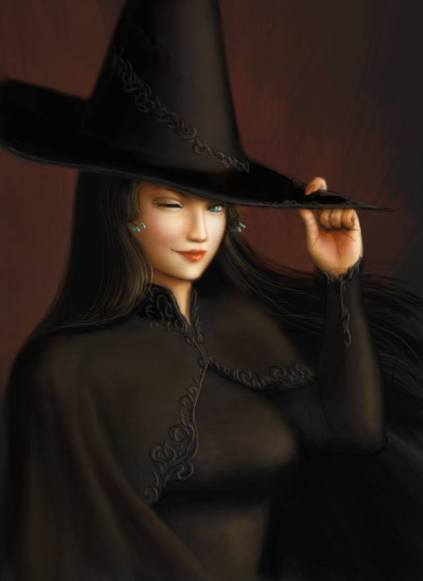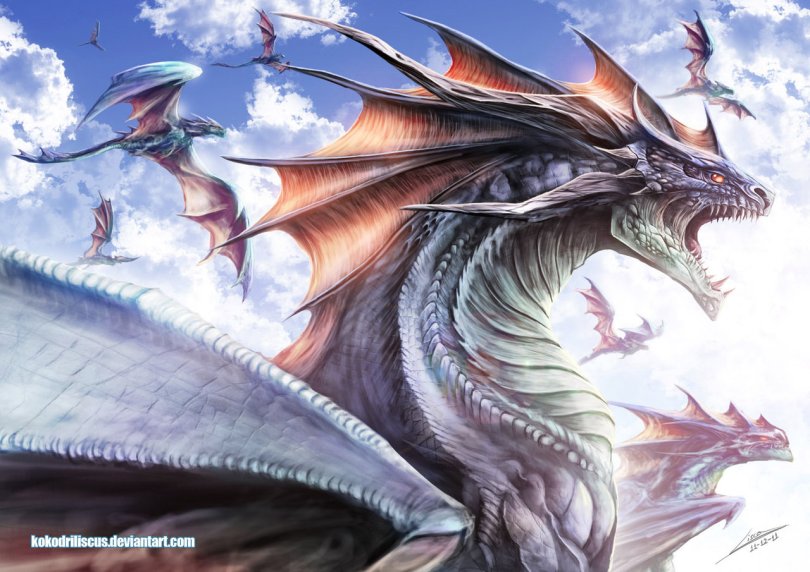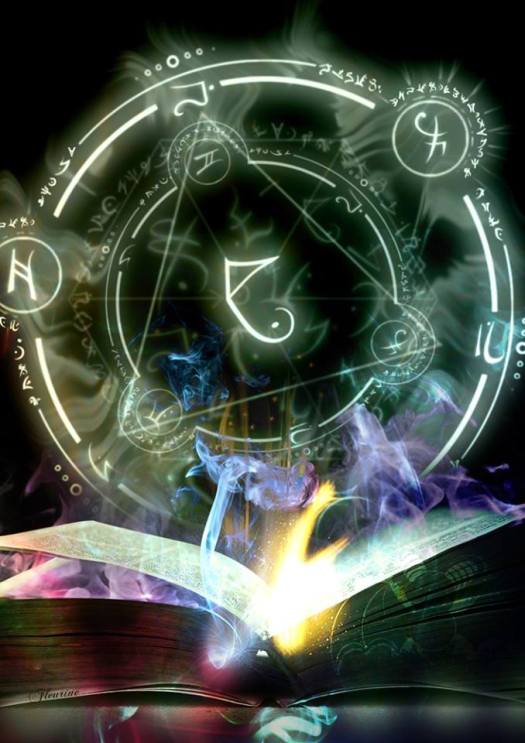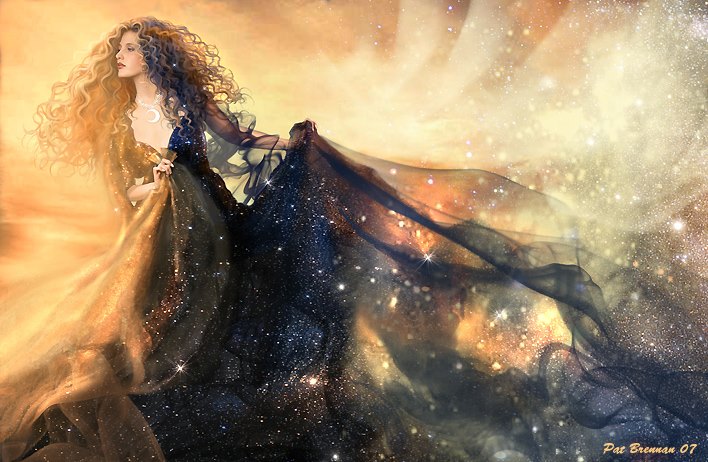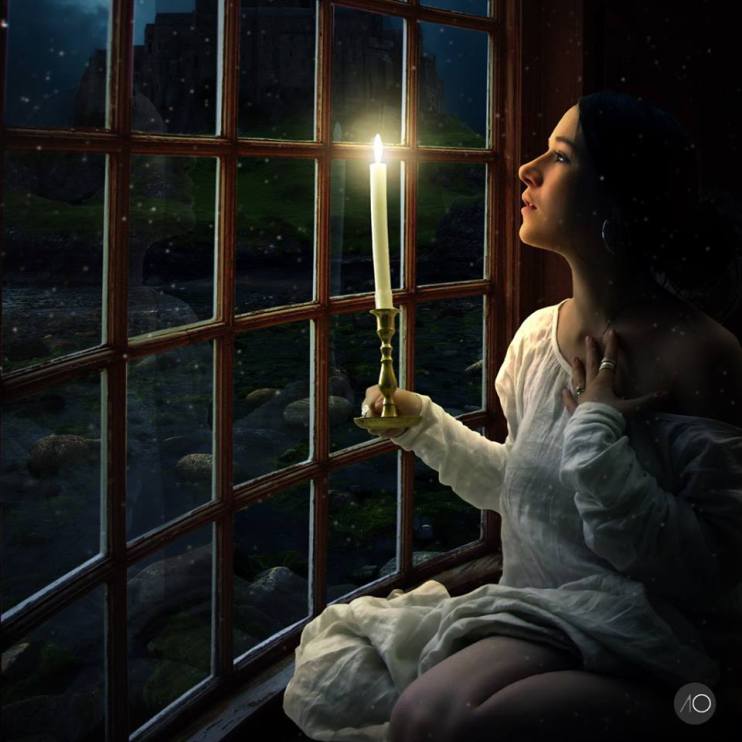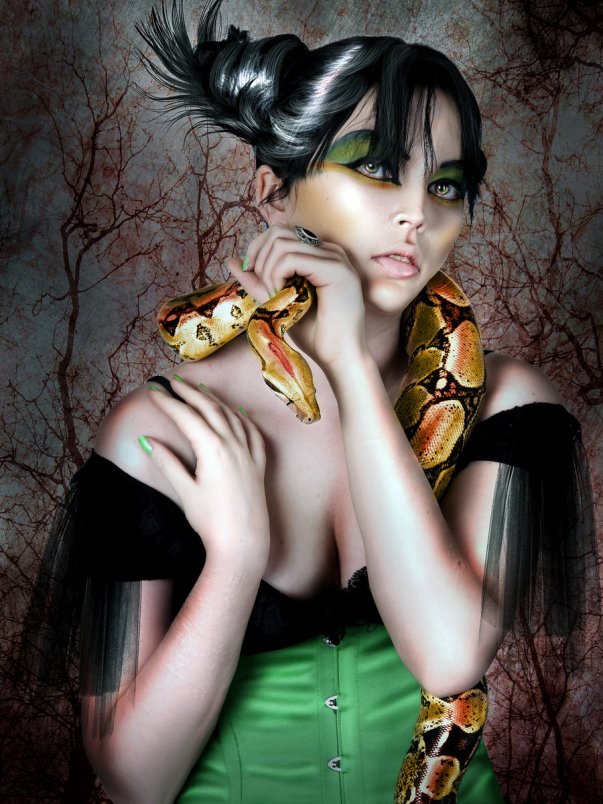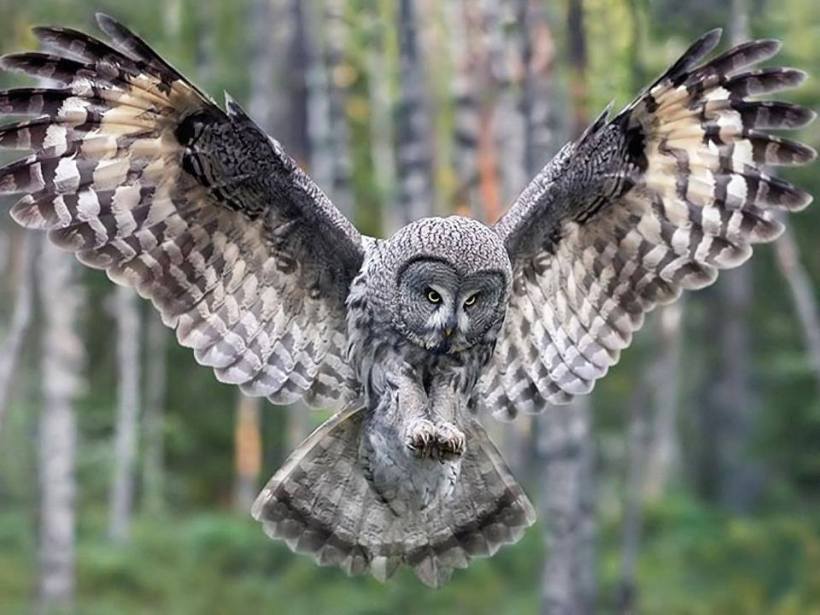Originally a series of posts, then made into a note for this blog’s mother page of FB’s Pagans, Witches, Warlocks, Shamans and Sages, I was inspired to seek this out again and blog it because of a very sweet woman finding such correlations and discovering this for her self on my friends list. The agenda of this series is to connect the ancient wisdom and secrets of the snake to women and how the snake was iconized and used to shun women’s rights from the light of day and banish us into shame. With this in mind, it has a strong feminist feel to it but does not, in any way shape or form meant to slander our brothers and the modern masculine gender. Times have changed for many of us in the Western world, but time has also held very still for other cultures and countries. I didn’t realize to what extent until I moved here and have seen old or sick women of supposed “no monetary” value wearing their full Burqas (or Burka) and forced to sit by the popular pedestrian areas and beg for money.
Women, the healers, the midwives, the wisdom innate within us and witches, yes, a very few were actual witches because of their natural abilities, watched all of it taken away by the twisting of the ancient symbol of life and knowledge, the snake.
Still standing proud are two snakes, representing the knowledge of medicine, and are wrapped around the Caduceus as a symbol of medicine. This symbol connecting as ancient healers is now stripped from us as women. We were powerless through out ancient times as we watched our rights as women ripped from us, no longer allowed to help those in need and indeed, banished by popular religions connecting the three, woman, knowledge and snake. In times past, we were instead accused and burned as witches and to this day, we have never fully recovered.
I am by far not the first to know this nor am I the last. Spread the love and knowledge dearest brothers and sisters, so that our legacy may not be completely forgotten in the mists of time.
Let’s first take a look at the various meanings, cultures, god, goddesses through out the world.
In American movies, snakes are pretty much used as a standard creepy-crawlies creature to get the girls to scream and the tough guy to protect them. Although they are used in this way in Asian cinema as well, there is another application: snakes don’t scare women: they are women. And it is the men who had better start running, lol.
So below, we have in summary the various aspects of snakes connecting them to knowledge and trees. Why, in modern popular religions are snakes demonized in connection to trees, healing, knowledge and then woman? Next we I will share with you the very same aspects of healing, shamans, knowledge, women then directly to witchcraft. Following this, how that connection was the very cause which instigated the destruction of female wisdom, healers through the accusation of witchcraft…a nasty means to an end.
Initially, snakes are most connected to Wisdom, then Cycles, Rebirth, Patience, Fertility, Balance, Cunning, Intuition, Awareness, Healing, Intellect, Protection, Solemnity, Rejuvenation, Transformation, Occult (hidden), Male/Female, Yin-Yang, Duality, Protection, Regeneration, and the Primal life force.
The serpent is often found associated with a sacred tree, perhaps guarding some sacred fruit. This chthonic serpent may be coiled at the bottom of the tree. The snake as protector at a sacred tree is seen in Biblical and Norse mythology, as well as in the tales of the Bodhi tree of Buddhism.
Ancient civilizations such as Egypt, Mesopotamia, India, Scandinavia, Greece, and Pre-Columbian America, to name just a few, all shared the symbolism of the snake in their religion and folklore. Snake gods and goddesses are seen throughout different ancient cultures such as the Greek Medusa with snakes for hair, or the Minoan Snake Goddess, or the Sumero-Babylonian Enki, the Serpent Lord of Wisdom and trickster god. They are significant deities with fierce and fearful power.
Snakes were an extremely popular representation of deity, of magical powers, and of regeneration and life. Indeed, serpents are life-giving and life-affirming. The Arabic has related words for serpent (hayyah) and life (hayat), both coming from the same root with the implication of the serpent being a life-giver.
Mythological Snakes Hold Opposite Interpretations.
Serpents represent both good and evil in mythology. Worship and fear of serpents has been seen throughout religious history, as the snake represents a male, a female or androgynous god. Throughout the world the serpent may symbolize opposing qualities to different peoples, such as death, destruction, rebirth, authority, sin, trickery, temptation, wisdom, prophecy, mystery, fertility, healing, medicine, poisoning, warning, renewal, mortality, and immortality.
Snakes serve as guardians in folklore. Symbolically they can represent the earth and the underworld. Snakes are thought of as secretive and are equated with the hidden and most sacred aspects of religion. Early religion used the serpent as a phallic symbol, and also as a symbol of the mother goddess. Their forked tongues are thought to show duplicity, and their words cannot be trusted.
Cosmic Serpents:
Much folklore worldwide depicts a great serpent that encircles the world. In this case where the snake swallows its own tail to form a circle, it is known by the Greek term Ouroboros, although the symbol first appeared in Ancient Egypt. Such a cosmic serpent is found in the Norse Jormungandr which encircled the world in the deep of the oceans, swallowing its own head.
The snake also inhabits the subterranean earth or the underworld, where he is a guardian of sacred entrances. Serpents are found throughout Egyptian mythology, usually as females. The cobra is a symbol of the goddess from antiquity and appears on the crown, the Uraeus, and in the hieroglyphic names of female goddesses. The cosmic chthonic serpent of Egypt is a male, however, known as Apep. Apep, an evil demon, represented darkness and chaos. Apep, who appeared from the Middle Kingdom onward, was considered the enemy of the Sun God, Ra.
The Egyptians practiced many rites to aid the god Ra to make his successful journey through each night undefeated by Apep. During the New Kingdom, the serpent Apep became associated with the god Set. The great antiquity of the place of the cosmic snake against the solar god was found in Egypt with a snake figure shown as an enemy of a solar deity. This was depicted on an ancient pottery bowl, now in the Cairo Museum (Naqada I, ca. 4000 BCE).
As a Native American Indian symbol (depending on the nation/tribe) the snake can be a masculine symbol, associated with the phallus of lightning which is considered a medicine staff of tremendous assertive power. Other tribes lean in the direction of feminine attribution for the snake and pair it with mothering (creation), and lunar (moon) symbolism.
Whether raising itself in masculine authority, or encircling the Earth in a motherly fashion the snake symbol of the Native American’s was highly regarded; utilized in ritual to invoke an element of pointed focus and weighty influence.
The ancient Celts were extremely nature-wise too, and approached snake symbolism from the behavior and life cycle of this magnificent creature. From the Celtic perspective, the snake was a symbol of secret knowledge, cunning and transformation.
Further, the snake Celtic symbol comes from observations of the European viper (also known as the adder) which is the only (along with the common grass snake) species able to tolerate the colder climate of the ancient Celts.
In the keen Celtic mind, snake symbolic meaning of transformation came from the shedding of its skin. Physical evidence of leaving its form behind (casting off the old self), and emerging a sleeker, newer version made the snake a powerful symbol of rebirth and renewal.
As far as the occult (hidden) symbolic meaning in Celtic and other cultures, this can be connected to the sleuth-like ways of the snake.
Disappearing in colder months and summoned by the sun marks the snake’s connection to the shadow worlds with its successful ability to live within the dark realms for extended periods of time. Alternatively, the snake softly moves into the embrace of the sun, and so it encapsulates the ancient magician’s creed of moving in perfect rhythm of natural forces.
In Eastern Indian myth the Sanskrit word for snake is Naga and these are associated with the element of water. Picking up water’s symbolism of emotion, love and motion, Nagas in this light are considered a feminine aspect and embody nurturing, benevolent, wise qualities.
To wit, the practice of Nagayuna in Eastern Indian alchemy seeks to achieve loving harmony between the physical and ethereal. Simply put, all of us striving to better ourselves by calmly easing into places of personal balance within the cosmic balance of the whole are practicing this ancient technique.
Snake tattoo symbolism varies according to the bearer of the mark. For example, My frien has a back piece depicting two serpents (nagas) wrapped around the seven prime chakras down the length of her spine. This (to me) incorporates the kundalini power available to all humans.
Additionally, this entwined snake imagery hearkens to the caduceus, in which the staves of Asclepius are made of two polar (and copulating) serpents which symbolizes balance, equanimity, union and regeneration.
We have looked at many things so far to really look at the histories, cultures, deities, and meanings behind snakes and how they are connected to women, more often than not, wisdom, healing and even the connection to sacred trees. I have been building up to this to help people understand why the most popular prevalent religions shame now both women and snakes, dismissing the knowledge and the healing wisdom within women and dismissing our rights, subjugating us through the ages. I am using the well know myth connection of the snake as the archangel Lucifer…both the most beautiful creatures in heaven but both banished for “pride”, the snake into the sacred tree of knowledge and the using of the icon Eve to bring down and shame all women in connection to all. This is propagated one way or another throughout all modern popular religions and shaped the way many cultures and societies viewed and treated women. Then came the inquisition and the witch trials. Don’t think for a second that there was any real “religious” reason for what they did, but instead used these associations as a means to an end. Let’s look at its history and how it has affected us in our modern society and still even today.
“By the early 1970’s feminists were becoming aware of a variety of race women were abused or treated unjustly by the medical system. As healthcare professionals, women were largely confined to subordinated roles as nurses and aids. As consumers of care, we found ourselves we found subjects insensitive and hazardous treatment; unnecessary hysterectomies, over-medicated childbirth, insufficiently tested contraceptives, involuntary sterilizations, and the almost universal condescension of male doctors.
We were not supposed to know anything about our own bodies or to participate in decision-making about our own care. As girls, the women of our generation had grown up thinking of their reproduction organs as the unmentionable region “down there.” In the Ladies’ Home Journal, which many of our mothers read, the medical advice column was entitled “Tell Me, Doctor.” Women who asked too many questions or insisted, for example, on “natural” childbirth, frequently found themselves labeled, right in their medical records, as uncooperative or neurotic. Serious complaints were likely to be dismissed as “psychosomatic” and attributed to women’s assumed suggestibility.
We were beginning to suspect that women had not always, in all circumstances, been so disempowered with respect to their own bodes and care. After all, medical technology and the medical profession that monopolized it were relatively recent historical developments, and yet somehow our female ancestors had, however imperfectly, negotiated the challenges of the female life cycle.
Sometimes, in conventional histories of American medicine, we found tantalizing references to a time when women predominated as healers – but only as an indication of how “primitive” American society was.
There is now wealth of information about women as lay healers, midwives, and “doctresses” in early America and their subsequent exclusion from formal medical education in the nineteenth and twentieth centuries. If anything, even more information has become available about women as lay healers in early modern Europe, and their fates in the witch persecution of the time – enough to tempt us into what could be many rewarding years of study.
First, on the matter of the number of women killed as witches, we used the estimates available to us at the time – scholars accepted figures of one million or even much higher. Although the body count will never be exact, historian John Demos writes that recent studies yield estimates that “fall in a range of 50,000 to 100,00.” Demos adds that, “These, in turn, were just a fraction of a much larger number of suspects….”
Second, we should clarify the role of the European medical profession relative to church and state. Witch trials represented extraordinary cooperation (and sometimes conflict) among all the dominant institutions, including both the legal and medical professions, which were heavily dependent on approval from the highest authorities. It was the medical profession that provided the courts with expert testimony: for example, Paulus Zacchias, the personal physician to two seventeenth-century Popes, authored a seven volume treatise called Medico-Legal Questions to demonstrate ”where medical knowledge could inform Canon Law on such issues as…the causes of foetal death, types of madness, poisoning, impotence, malingering, torture, [and] witchcraft…”
Physicians benefited from the suppression of their competition: In the European cities where they congregated, they practiced in a market filled with lay healers and empirics. In London, in 1600, there were fifty physicians affiliated with the College of Physicians (a stronghold of Galenic medicine), outnumbered by some 250 mainly unlicensed practitioners (not including surgeons, apothecaries, midwives, and nurses) who made a living. In 1581, the College of Physician, which claimed the right to regulate medical practice in London, attempted to prevent a lay healer named Margaret Kennix from practicing – but Queen Elizabeth had intervened decreeing that “the poore woman should be permitted by you quietly to practice and minister to the curing of diseases and wounds, by the means of certain Simples [herbal remedies] in the applying where of it seemth God hath given her an especial knowledge, to the benefit of the poorer sort…” Such protection for her favored few was not to last after Elizabeth’s death in 1602.
We stand by our assertion that male physicians were both more dangerous and less effective than female lay healers. Francis Bacon (1561 – 1626) himself a scientific originator, thought that “empirics and old women” were “more happy many times in their cures than learned physicians”. The conservative philosopher Thomas Hobbes (1588 – 1679) concluded that he would “rather have the advice or take physic from an experienced old woman that had been at many sick people’s bedsides, than from the learnedst but inexperienced physician.”
Third, we made the assumption that witches may have met in “covens” or other organized groups, and we referred to Margaret Murray when we said that “some writers speculate that these may have been occasions for pagan religious worship.” Murray’s research has since been discredited, and today most scholars seem to agree that the beliefs of women who were executed as witches cannot be differentiated from those of the rest of the population, and most were avowedly Christian. Some pagan religions or remnant did survive in places but the connection between this and women accused of witchcraft remains unclear.
Another point worth revisiting concerns the religious wars in the background of the witch hunts. We wrote: “…witch-healer’s methods were as great a threat (to the Catholic Church, if not the Protestant) as her results, for the witch was an empiricist…” we can no more do justice here to the conflicts of the Reformation and Counter-Reformation than we could in a short booklet. But it should be noted that while Protestant fought the Roman Catholic Church, they tortured and executed witches too.”
From the Book: Witches, Midwives and Nurses-a History of Women Healers (second edition)
By Barbara Ehrenreich and Deirdre English copyright 1973
Much work has been done to support this in the decades that followed, but it still completely altered our society and our world. Even in modern times, though amazing efforts have been made to counteract this…it is nor ever will be enough for what they have done, not to a culture, not to a country, not to a group of people belonging to a specific gene pool but to the entire female population. the treatment of atrocities still goes on today in our culture, under the curtains of political correctness and in other cultures and societies, it is blatant and lawful, even encouraged.
Moro
Note: This article was done sometime ago and several contributing sources were not appropriately given credit. I do apologize for this and if you happen to see a source that you recognize, please feel free to let me know so that I may also look it up and give them credit.
Regarding the Art: I must tell you this was a difficult original owner to track down because it is such a popular altered wallpaper nowadays. Even when I found it originally, it was from Nexus Desktops. I am glad to have found the original artist and very happy to share her link to this great piece.
Art title: ‘wrath‘ by pieceesnp @ http://pieceesnp.deviantart.com/art/wrath-138460567?q=gallery%3Apieceesnp%2F1054735&qo=26

